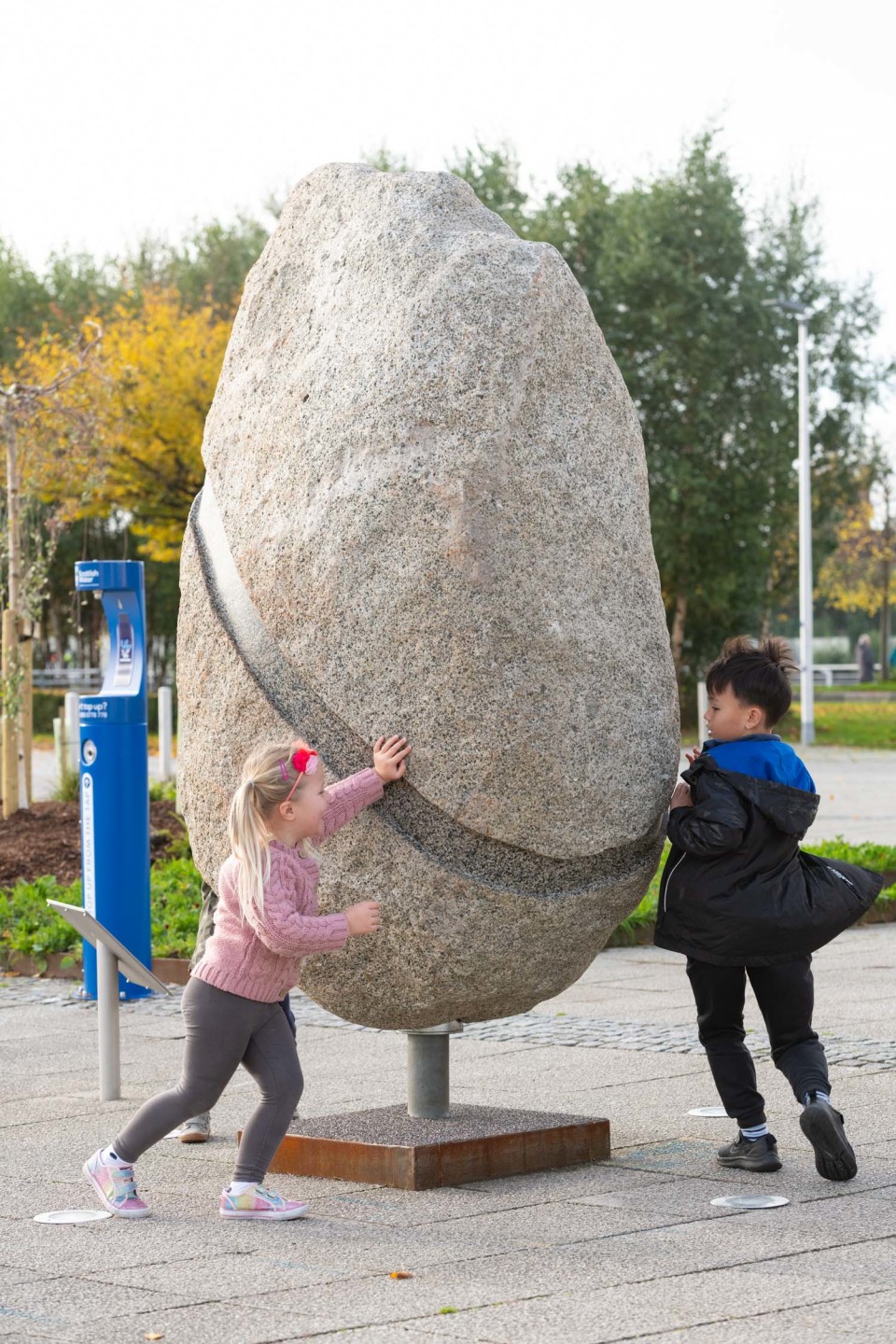Neurodiverse Placemaking
By Bruntwood

I have ADHD, selective mutism, OCD, dyscalculia and, undiagnosed as yet, (there is a four to seven year waiting list for NHS diagnosis) but I present many ASD traits too. I am, as many women are, a master of masking my differences. It’s been reported that one in seven people are neurodivergent but with so many people undiagnosed it’s thought one in five is more likely. Everyone’s neurodiversity is unique, so I can only give my personal experience but there are many common difficulties that we experience in a neurotypical-designed world: I think as a community we are united by our senses, and how easily they can be overwhelmed.
Placemaking: Public Art
In the public realm natural materials to connect with are essential to me, wood and stone provide tactile, soothing experiences that can make a huge difference to the enjoyment of a city and be a deciding factor in where I choose to spend my time.
A massive part of my life in and out of work is public art, especially sculpture, and post-war sculpture is a movement that has great appeal not just aesthetically but with its robust design it encourages interaction and touch. During a burnout I need to touch these natural or appealingly rough materials to bring myself back down. In fact, many artists of the post-war era encouraged communities to climb and sit on their works that we now, misguidedly, treat as precious and not to be touched. Modern art interventions within placemaking often default to murals or similar 2D and out of reach visual artworks which are seen as a more affordable alternative, which is only true in the immediate short-term.
A few temporary public art installations have soothed me lately, the disco heart we had at Circle Square over winter as part of the Oxford Road Corridor light festival became a lovely repetitive focus that brought a sense of calm to the space and in turn activated Circle Square. Another great example of art that supports accessibility is the series of Turning Stones developed by Timberplay, a large rock on a rotating plinth that invites you to push it provides a grounding experience for the user.
When I feel hemmed in by the glass and steel of a city and I’m experiencing burnout, sensory overload or anxiety I look for a stone building and lay my hands on its corners, but to have the invitation to do this self soothing exercise through art or natural materials built into our infrastructure is the ultimate goal as it not only appeals to many different groups of people as a similar focal point of their attention but it activates a space and draws people together in the process.
Seating Matters.
Personally, I believe all social spaces, without too much thinking, can be adequate and accessible for all as long as we stick to best practice for providing comfort - which is to say spaces should allow long dwell times through flexibility of use. A bench is no good if the bench is designed in a hostile manner to deter adaptability - pigs ears to deter skateboarders and arms rests to deter the homeless are par for the course, but neither of these uses should be discouraged, and who else are we alienating in the process. We find that safe spaces of rest and reflection are designed out of cities because of concerns of anti-social behaviour but in choosing to omit comfortable spaces isn’t that in itself a form of anti-social behaviour? There is a climate of scepticism concerning the safety and upkeep of good public spaces, however by encouraging local distinctiveness and enabling social activity within them, they’re likely to be safer, cleaner, greener and generally more valued than homogeneous spaces which tend to prioritise surveillance and regulations, and push out the neurodiverse, disabled, the young and the old in the process.
Whilst quieter restful spaces are essential in terms of limiting sensory overload, these can still be situated in areas of high footfall, and in fact to guarantee safety they need to be at least passively overlooked by others. It’s worth noting the most misdiagnosed neurodiverse group are girls, and in the planning of public use spaces, it’s girls who feel consistently left out of the designs. Placemaking has fallen back on forms of exuberant play like climbing walls in order to engage young people but research shows that what girls most want are quiet yet playful seating areas away from the main areas of activity. Swing seats are a common request that we’re seeing when we speak to girls and again, this is an asset that provides a certain element of reassurance in its repetitive calming movement. The overlap here with what also works for neurodiverse communities is huge. A great recent example which tackles neurodiversities, playfulness and age-friendly cities (and by happenstance creates a good girl-friendly space) is Restorative Ground in Manhattan.
I think an important thing to remember when it comes to inclusive design is that it benefits those without access needs too, no one is at a disadvantage when we design equitable places for all.
Resources I recommend include Why Planning Should be More Neurodiverse, the RTPI’s two part series: Neurodiversity in Planning. Part 1 and Part 2, episode 64 of 50 Shades of Planning podcast: Think Differently, the Neurodiversity Planning Toolkit, and Neurodiversity Hub which includes academic texts and reports that look at inclusive design within workspaces as well as on our streets.
Hayley Flynn is Placemaking Co-ordinator at Bruntwood Works.